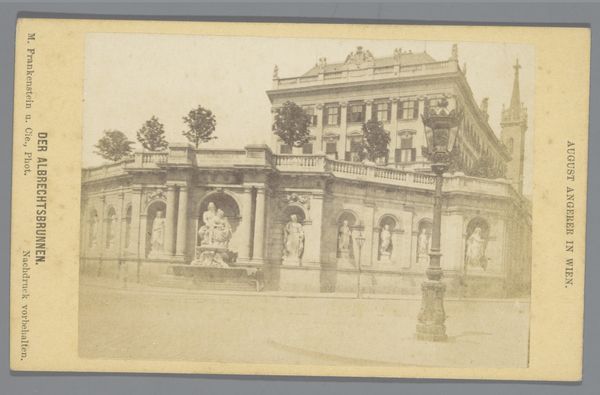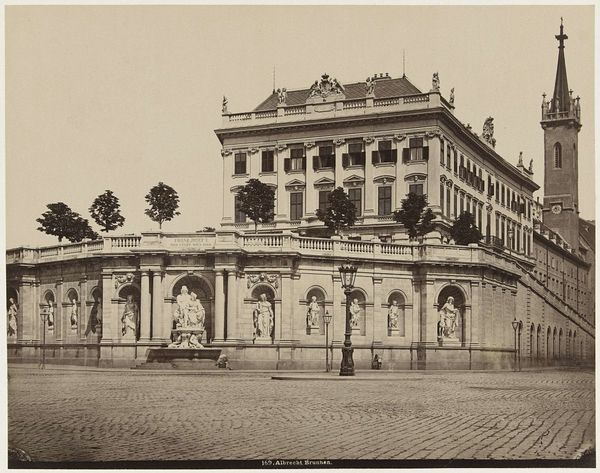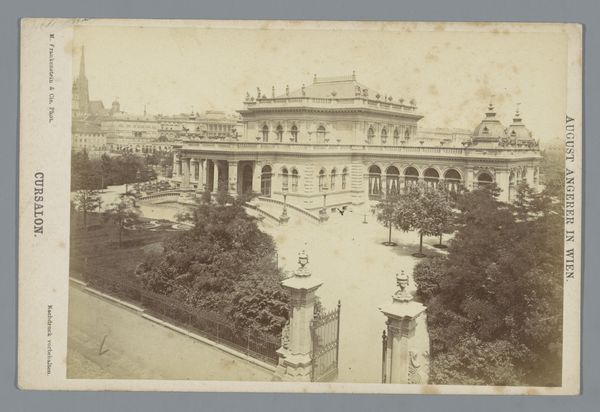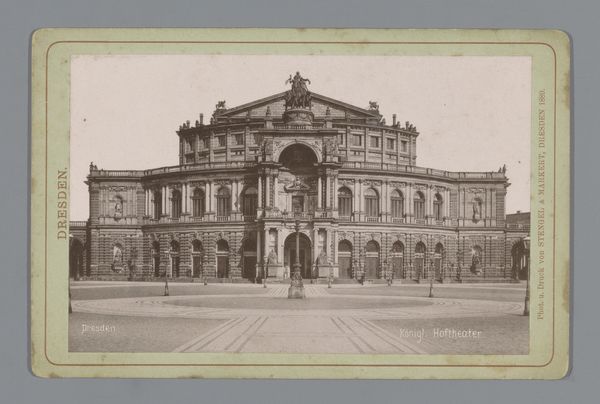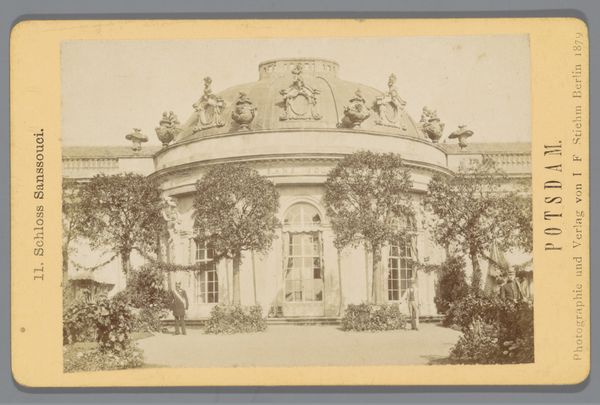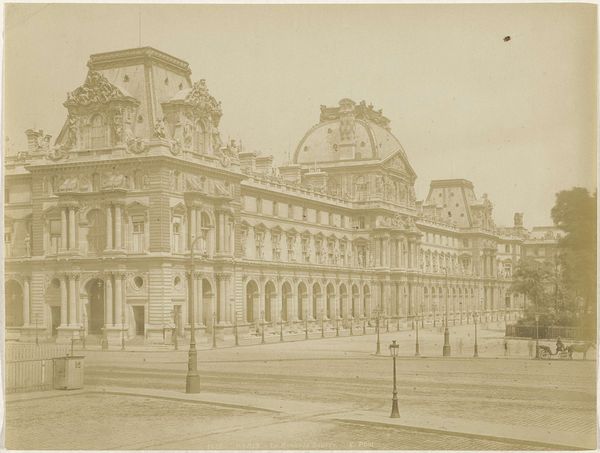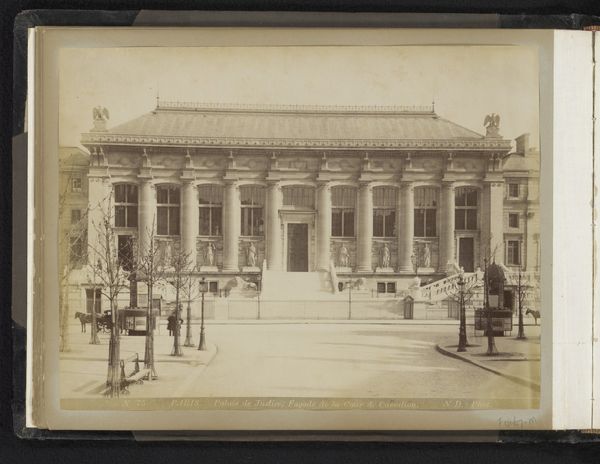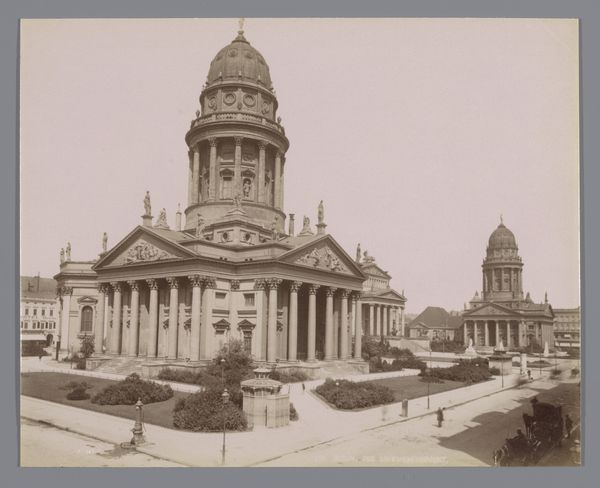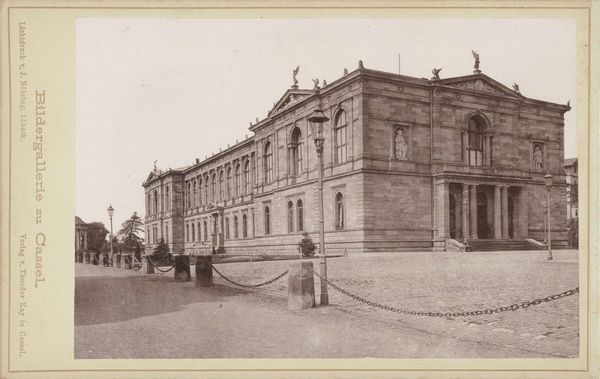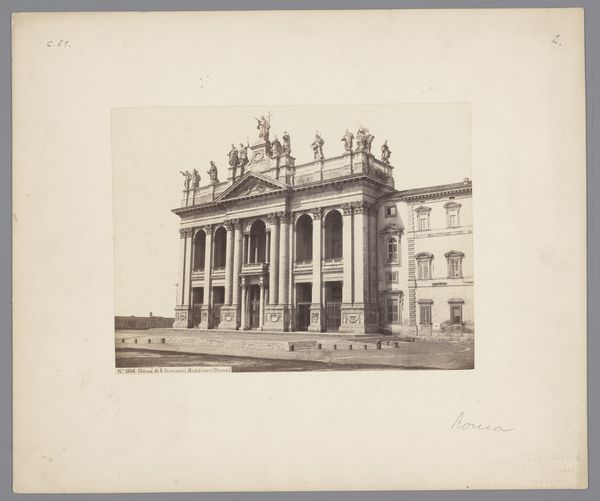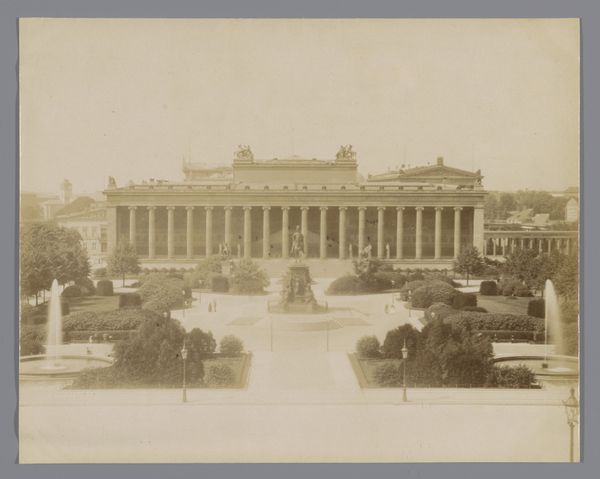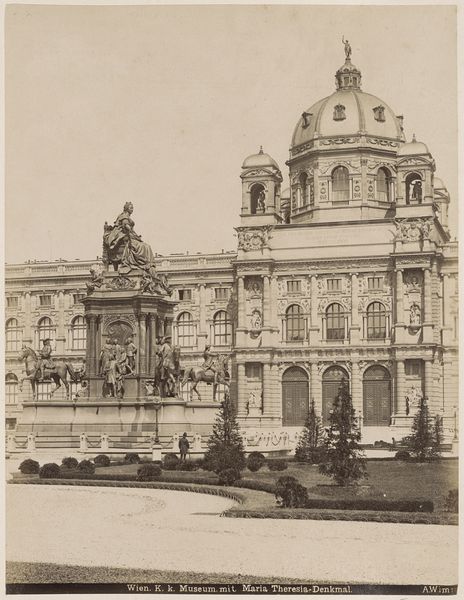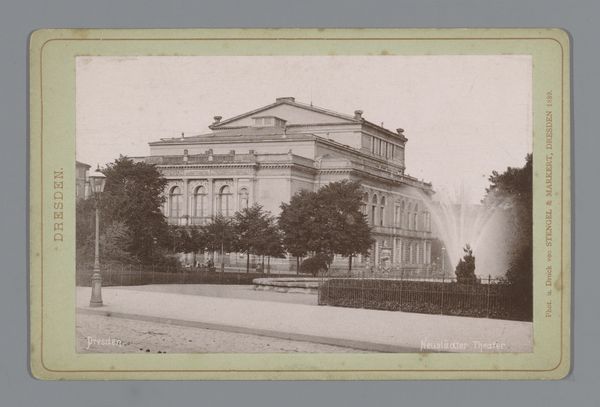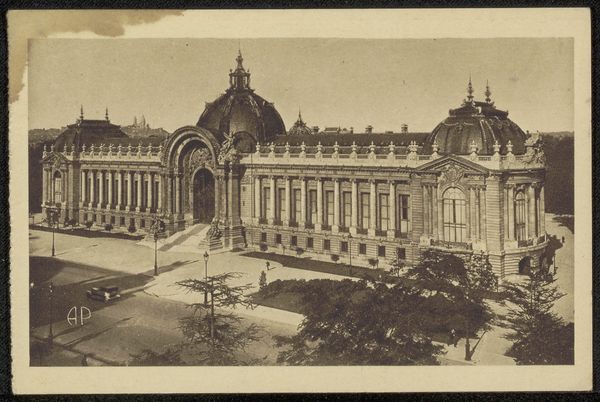
Dimensions: height 226 mm, width 281 mm, height 510 mm, width 330 mm
Copyright: Rijks Museum: Open Domain
Curator: Editor: Here we have a print photograph of the Königliches Theater in Wiesbaden, Germany, taken in 1896 by Mondel & Jacob. It's so ornate! I'm struck by the sheer amount of stone used and the labor involved in its carving. How might we interpret this image from a material perspective? Curator: Well, think about it: What does the prevalence of stone, a permanent material, tell us about the aspirations of the society that built it, and the photographers who documented it? What systems of quarrying, transport and labor would need to exist for such a monumental structure to be realised? Also, consider the chemical processes required for developing a photograph at the time – what were they dependent on? Editor: So it's about the larger network that made this building, and this image, possible. The resources mined, the workers who built it, the whole economic picture? Curator: Precisely! The photograph isn’t just an image of the theater, but an index of the material conditions that enabled its existence. The building itself represents a significant investment. Neoclassicism deliberately invokes historical legacies and the ambition and social structure that produced the historical empires the building references. Even the choice of a photographic print speaks volumes about accessibility and dissemination in the late 19th century. Was it mass-produced, easily available or high end? Editor: So the choice of photography means something in and of itself? I never really considered that. I guess the material, the *stuff* of art, is never neutral. Curator: Absolutely. Looking closely at the materials and processes always reveals the social relations embedded within them. Even the air and light are materials which require contextual analysis. What stories might be etched into this old stone, and what might they mean? Editor: This gives me so much to think about when looking at photographs and architecture. Thank you.
Comments
No comments
Be the first to comment and join the conversation on the ultimate creative platform.
